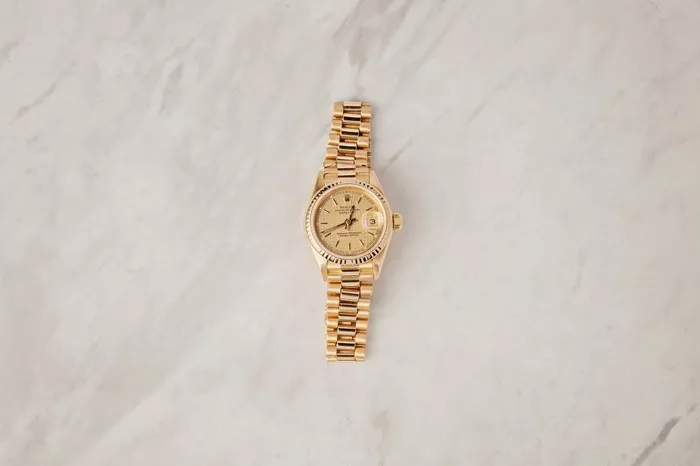Rolex, the epitome of luxury and precision in the world of horology, has long captivated watch enthusiasts and collectors with its timeless designs and unmatched craftsmanship. Understanding the intricacies behind the production and cost of making a Rolex watch offers insight into why these timepieces are held in such high regard and command premium prices.
Production Time
Rolex once famously stated in several old advertisements that it takes a year to make a Rolex. This statement, while compelling, is somewhat misleading. If we consider the number of watches Rolex produces each year, it becomes clear that the actual production time for each watch is not one year. However, the essence of the advertisement highlights the meticulous care and precision involved in crafting each timepiece.
In those ads, Rolex emphasized that “in appearance, its sturdy Oyster case is carved from a single piece of hardened Swedish stainless steel. Such perfection takes time: each Rolex Oyster case takes more than a year to make.” This claim reflects the high standards of craftsmanship and the thorough quality control measures that Rolex implements.
Modern Production Efficiency
It’s important to note that this advertisement was made decades ago. Since then, Rolex has significantly optimized its production processes to enhance efficiency while maintaining the highest standards of quality. Today, while the production process at Rolex remains largely manual to ensure perfection, some parts of the manufacturing process have been automated and are managed by advanced machinery.
For instance, the use of robots for repetitive tasks such as applying the luminous coating to watch hands ensures precision and consistency. However, critical components like the movement and the final assembly of the watch are still performed by skilled watchmakers.
Variability in Production Time
Different Rolex models take varying amounts of time to produce, which is reflected in their prices. For example:
- Oyster Perpetual: This is Rolex’s entry-level model, known for its simplicity and use of basic materials like stainless steel. It has a straightforward design and utilizes the same movement as other models in its range. Therefore, it has a relatively shorter production time.
- Submariner No Date: Despite using the same movement as the Oyster Perpetual, the Submariner is more expensive and takes longer to produce. This is because it undergoes more rigorous testing to ensure its water resistance, and features components like the ceramic bezel, which require additional time to manufacture and assemble.
Cost of Production
The cost to produce a Rolex watch varies depending on the materials used and the complexity of the model. On average, it costs about $2,500 to $4,000 to produce a regular Rolex watch, particularly the stainless steel models. This range encompasses the most popular models, but the cost can rise significantly when precious metals or complications are involved.
Breakdown of Production Costs
Several factors contribute to the production cost of a Rolex watch:
- Materials: The quality of materials used in a Rolex watch significantly impacts the cost. Stainless steel, particularly Rolex’s proprietary Oystersteel, is commonly used for the case and bracelet of many models. However, higher-end models incorporate precious metals like gold and platinum, which increase the production cost.
- Movement: The heart of a Rolex watch is its movement. Each movement is a marvel of micro-engineering, comprising hundreds of tiny components. The research, development, and assembly of these movements are labor-intensive and costly processes.
- Assembly: The assembly of a Rolex watch is largely done by hand. Skilled watchmakers meticulously assemble each watch, ensuring that every component fits perfectly and functions flawlessly.
- Quality Control: Rolex watches undergo stringent quality control measures. Each watch is tested for accuracy, water resistance, and overall performance. This thorough testing ensures that only watches meeting Rolex’s high standards reach the market.
- Research and Development: Rolex continually invests in research and development to innovate and improve its watches. This includes developing new materials, enhancing movement precision, and introducing new features. The cost of R&D is a significant component of the overall production cost.
- Automation and Technology: While much of the watchmaking process is manual, Rolex also invests in cutting-edge technology and automation to improve efficiency and precision. The cost of maintaining and upgrading these technologies contributes to the overall production cost.
Conclusion
Understanding how much it takes to make a Rolex involves delving into the meticulous craftsmanship, high-quality materials, and stringent quality control measures that define the brand. While the production time and cost can vary depending on the model, the essence of a Rolex watch lies in its blend of traditional watchmaking techniques and modern innovations. This combination ensures that each Rolex timepiece is not only a functional timekeeper but also a work of art that stands the test of time.
In summary, while the old advertisements claiming that a Rolex takes a year to make may have been an exaggeration, they underscore the meticulous attention to detail and quality that goes into each watch. Today, Rolex has optimized its production processes to balance efficiency with the timeless quality that the brand is known for. Whether it’s the entry-level Oyster Perpetual or the more complex Submariner, each Rolex watch is a testament to the brand’s commitment to excellence and precision.


